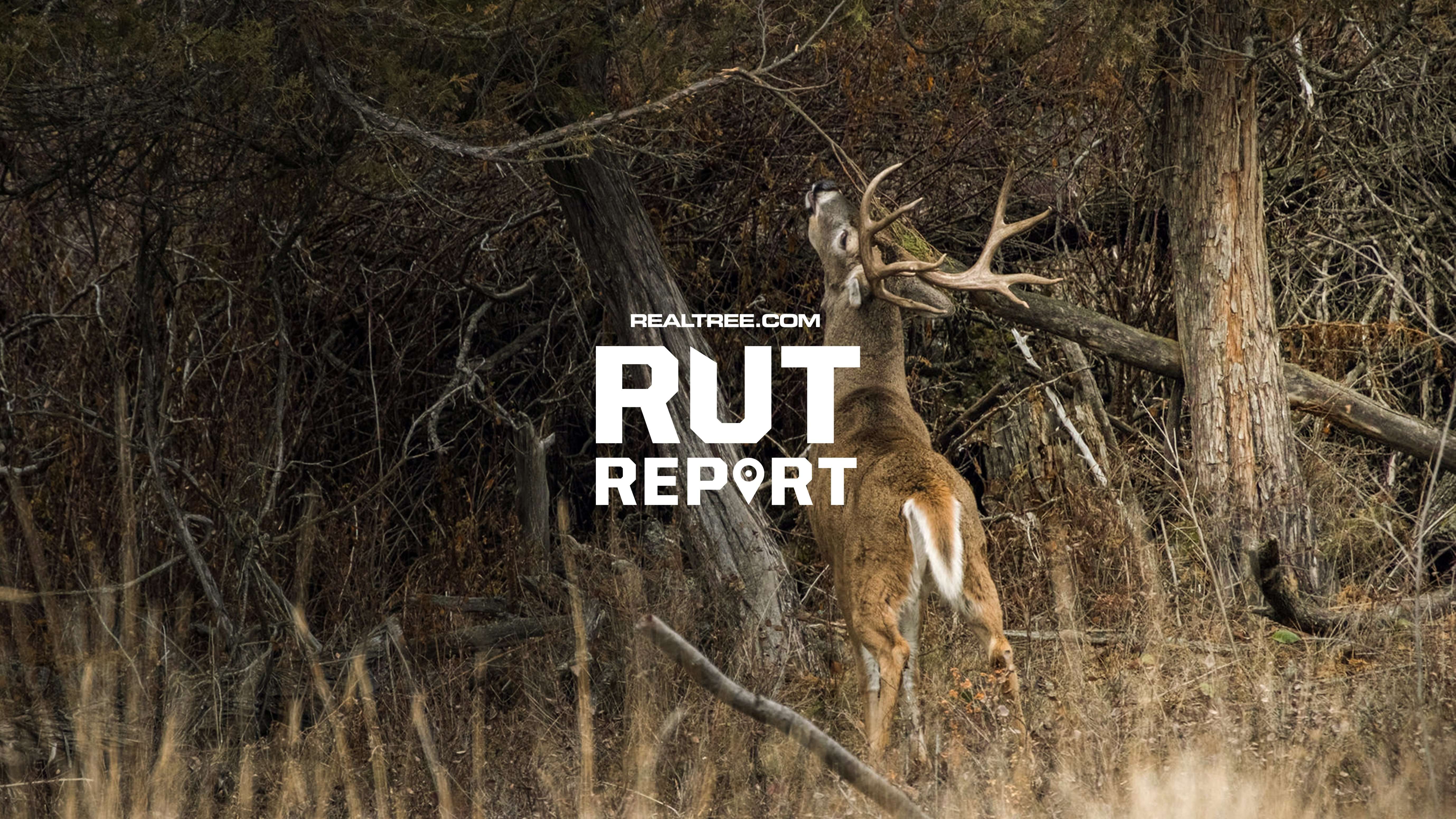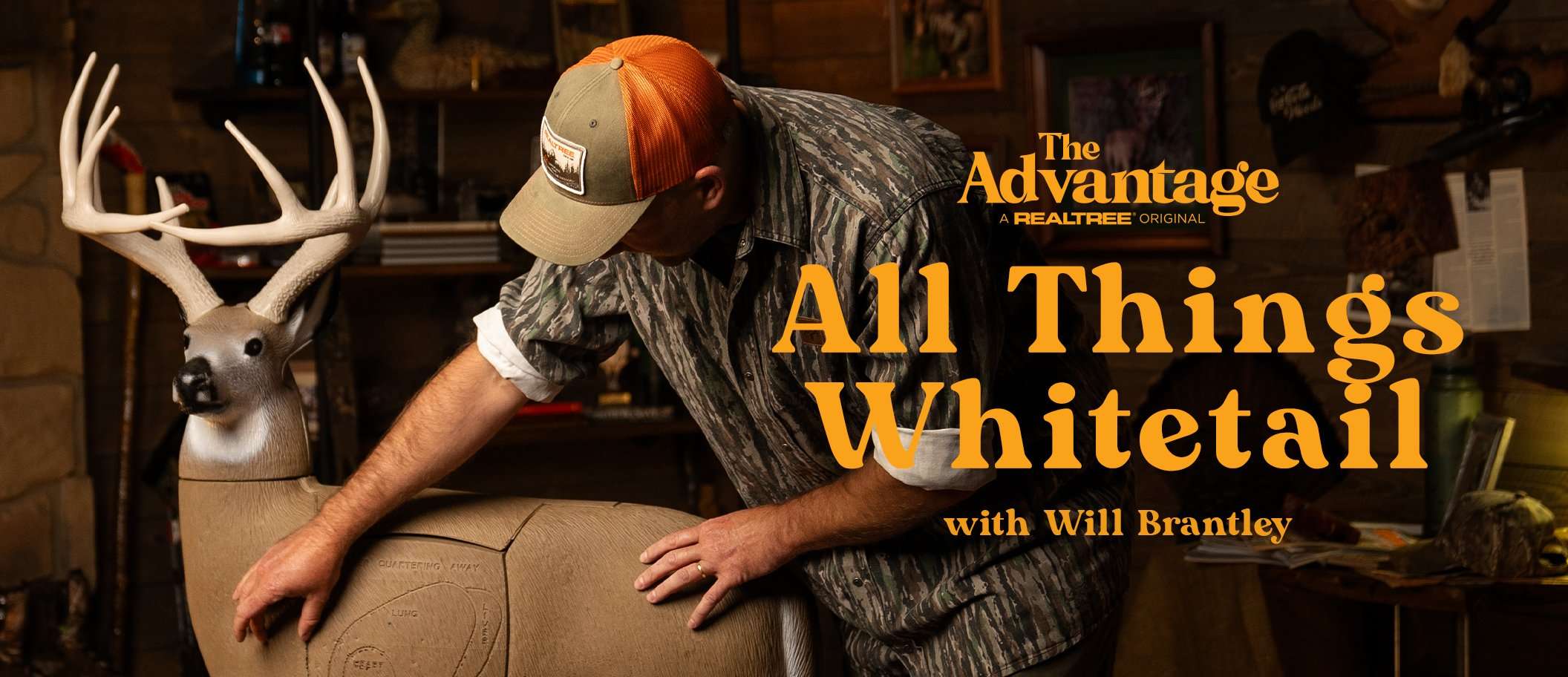While we often boil or steam our blue crabs whole, sometimes its easier to clean them before cooking.
One of my favorite parts of vacationing anywhere along the coast is catching and eating blue crabs. We boil em, grill em, pick the meat for dips and She Crab Soup, if it's a dish with crab meat in it, we've probably tried it.
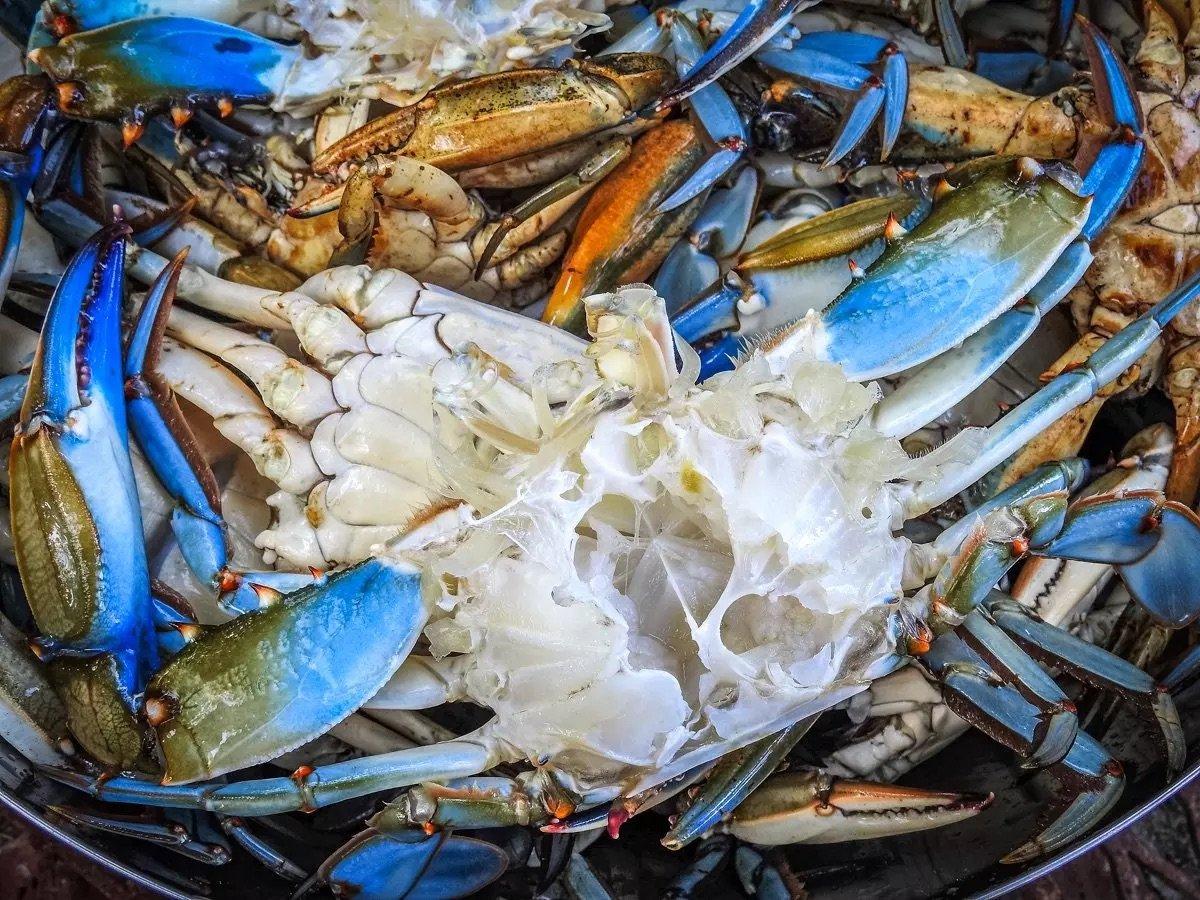
While some prefer to cook them whole, many blue crab fans like to clean the crabs before cooking. Images by author
While we normally leave crabs whole for crab boils, for other dishes we clean the crabs before cooking. It's quick and easy, and cleaned crab makes a lot less mess at the table. Cleaning the crab also allows seasoning flavors to soak into the body meat as they cook.
This method of cleaning a crab is simply a matter of popping off the back shell then using a hose to spray out the insides. Our preferred tool for popping backs is an oyster knife, but a butter knife or a flat screwdriver will work just as well.
We prefer to put the crabs straight into a cooler of ice as soon as we remove them from the trap or take them out of the net. A half hour or so on ice will numb the crabs and put them in a state of suspended animation, making it easy and humane to clean them. As long as you keep water drained, crabs can safely stay on ice for up to a day or two. I normally open the drain plug on the cooler, then prop the opposite end up on a brick or rock so that any water that forms as the ice melts has a way to drain from the cooler. Keep the ice replenished so that the crabs never start to warm back up.
DON’T MISS: LOUISIANA-STYLE BLUE CRAB AND SHRIMP BOIL
1. Pick the right crab. Check your local regs to see what the minimum size limit on blue crabs is. Some areas also limit or prohibit the harvest of female crabs. The easiest way to tell a male from a female blue crab is to flip them over and look at their bellies. The apron (the flap that goes from back of crab up onto belly) of a male will be long and skinny. On a female crab, the apron forms a broad triangle. Female blue crabs often have bright red tips on their claws as well. Even if harvest of female crabs isn't prohibited, we normally toss them back so they can continue to reproduce.
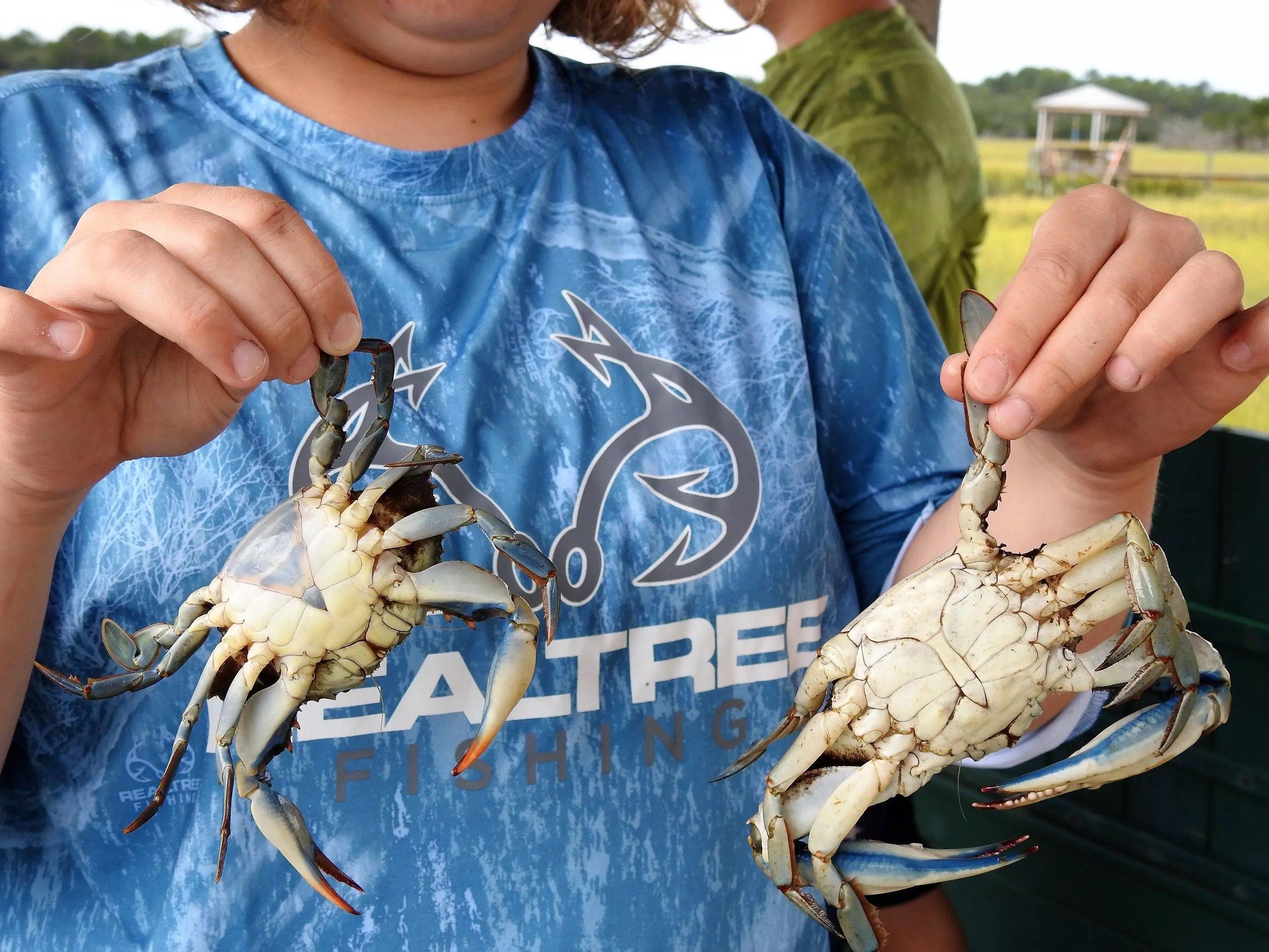
Check local regulations on what crabs you can harvest. In some areas you can’t keep females.
2. Slide your oyster knife or other thin, flat tool under the crab's shell at the soft spot just in front of the rear swimmeret fin/leg.
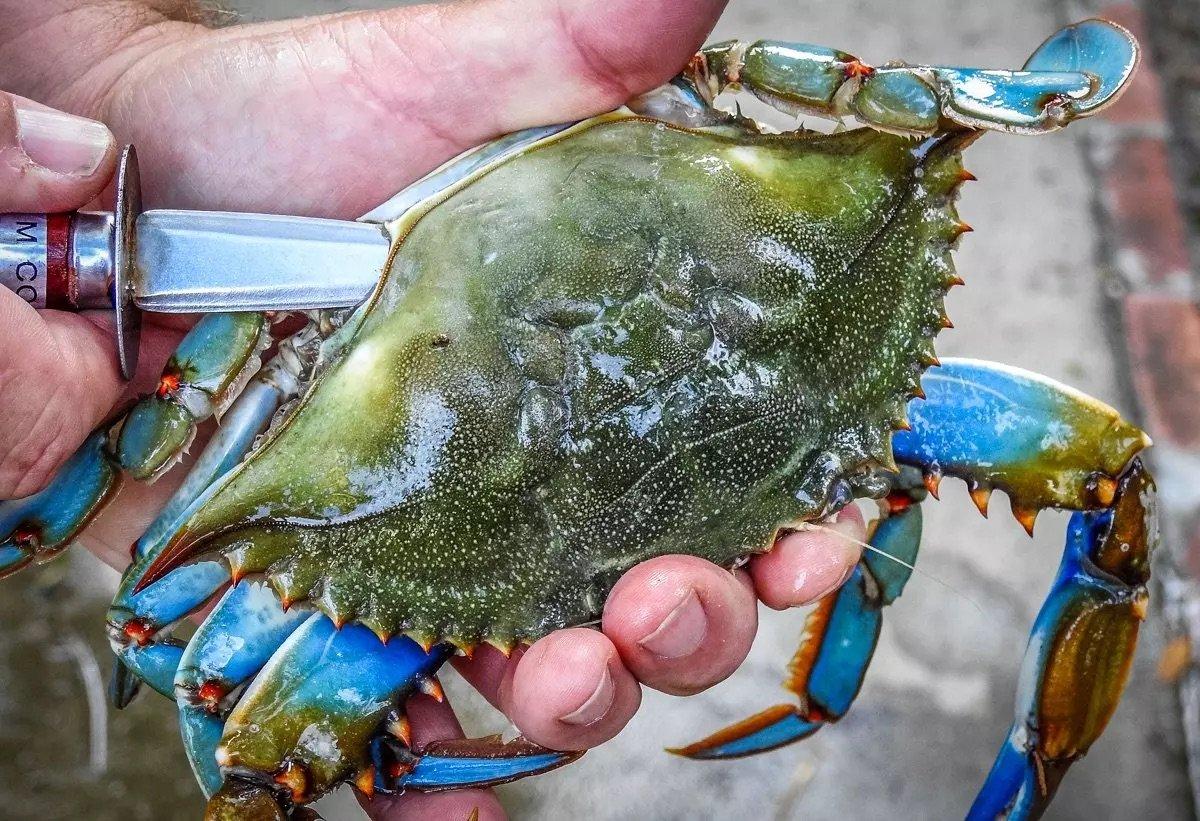
Slide an oyster or other flat knife under the shell.
3. Lift the tool to pop the shell free from the crab, exposing the entrails and gills.
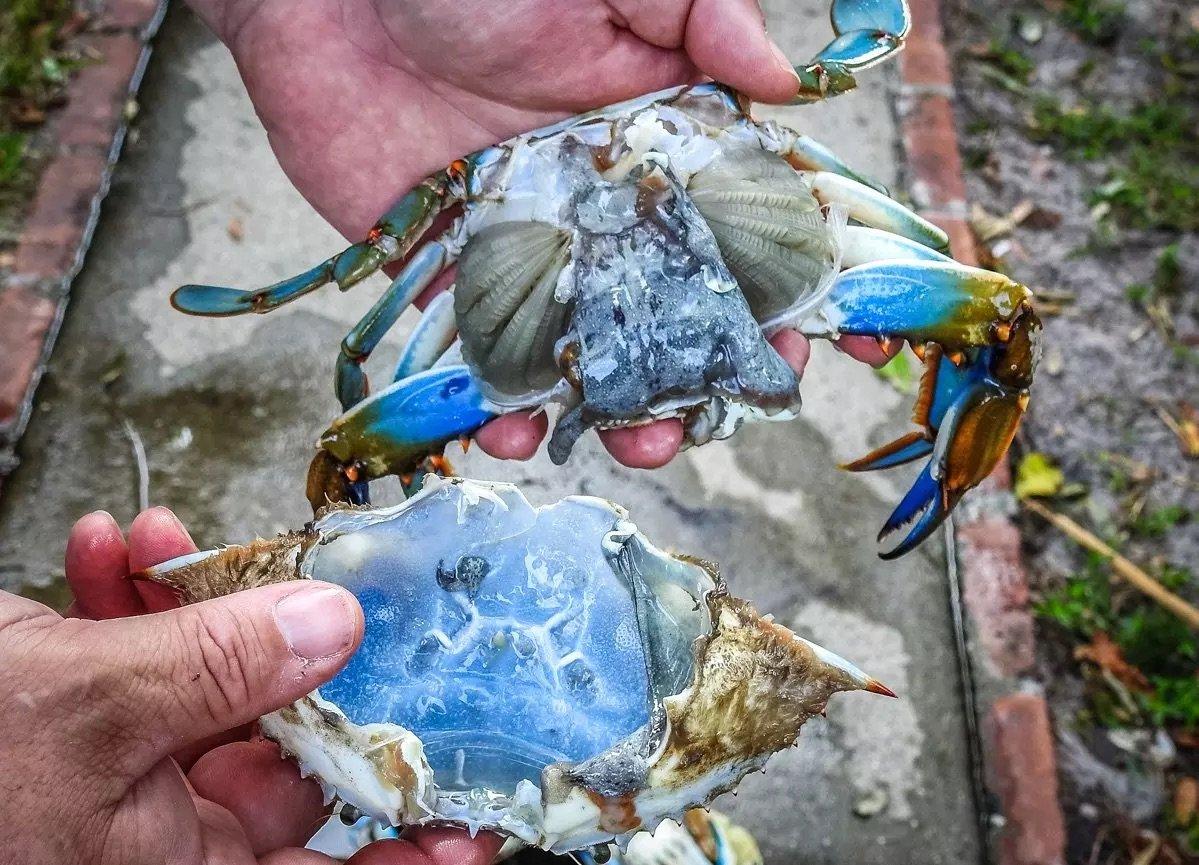
Pop the top off, exposing the gills.
4. Use a garden hose to spray out the crab, leaving it clean and free of digestive tract and gill material.

Use the spray from a garden hose to rinse away the gills and entrails.
5. After spraying the crab clean, there will be nothing left but shell and succulent crab meat.
DON’T MISS: MARYLAND-STYLE STEAMED BLUE CRAB





